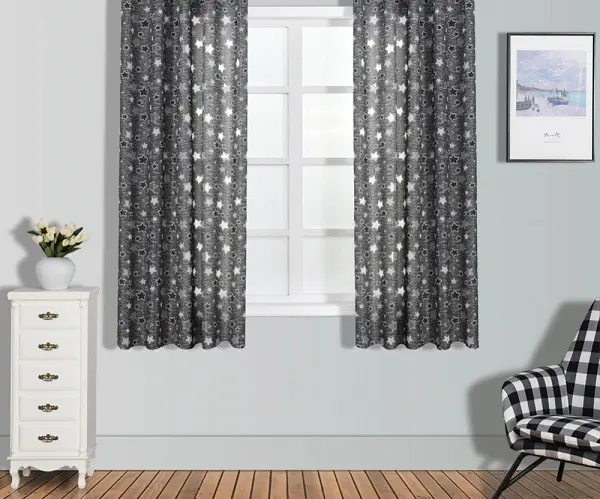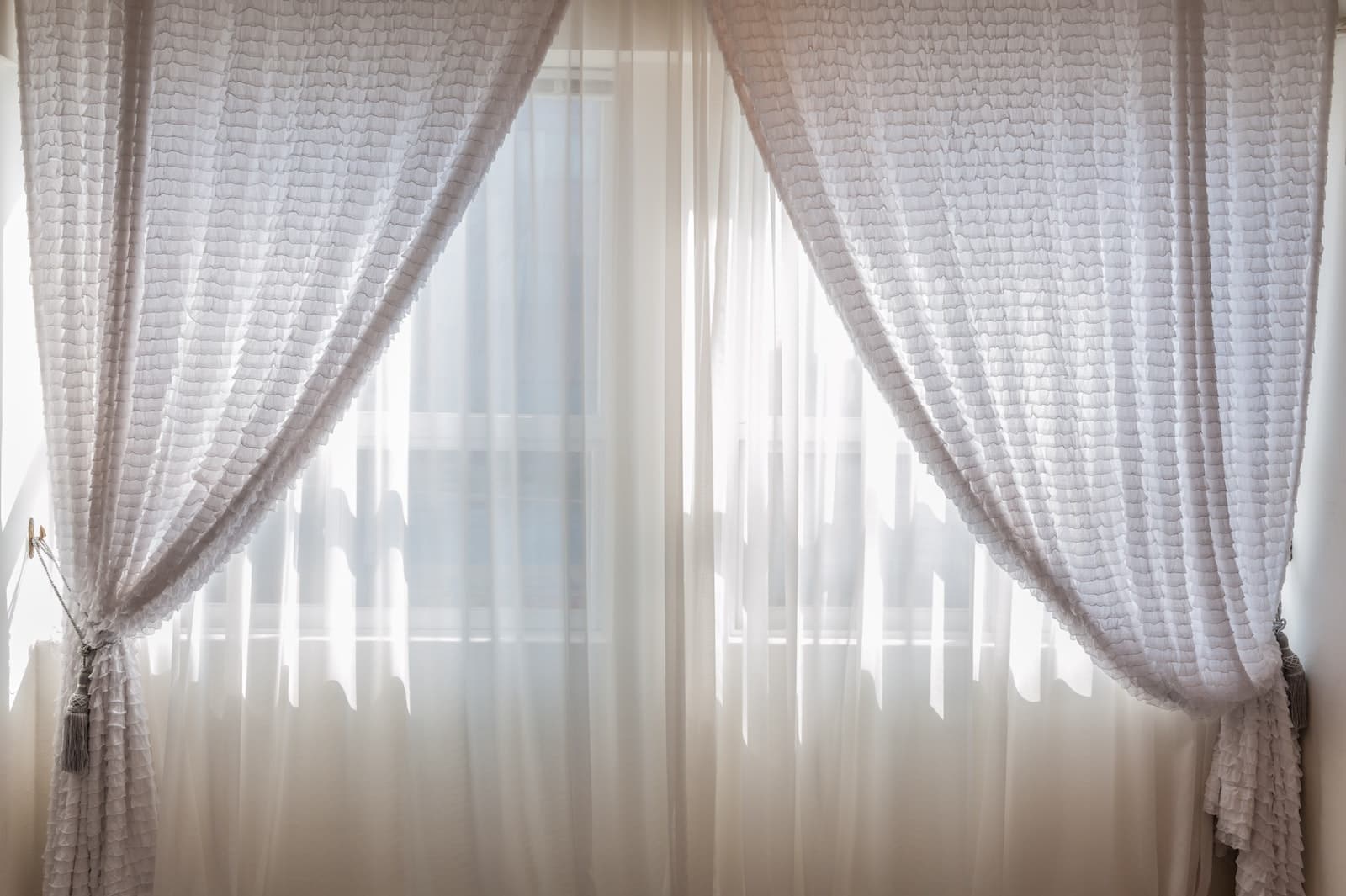Short curtains can be okay in some situations, such as when you have a small window, a radiator, a window seat, or a furniture piece below the window. Short curtains can also create a casual and cozy look for your room.
However, short curtains should be avoided in other situations, such as when you have a large window, a high ceiling, or a formal style. Short curtains can make your window look smaller, your ceiling look lower, and your room look unfinished.
What’s The Problem With Short Curtains?
Curtains are a common and useful window treatment that can add style, privacy, and insulation to your windows. However, choosing the right length of curtains can be tricky, especially if you have different sizes and shapes of windows in your home.
One of the most debated questions about curtains is whether short curtains are ever okay. Short curtains are curtains that end above the sill level or at the sill level of the window. They are also known as cafe curtains or tier curtains.
Some people love short curtains for their simplicity and charm. They think that short curtains can create a casual and cozy look for their room. They also think that short curtains can be practical and convenient for some windows.
Other people hate short curtains for their awkwardness and cheapness. They think that short curtains can make their window look smaller, their ceiling look lower, and their room look unfinished. They also think that short curtains can be impractical and inconvenient for some windows.
So, are short curtains ever okay? And if so, how do you style them properly? In this blog post, I will answer these questions and explain when and why short curtains can be a good choice for your windows.

When are short curtains okay?
Short curtains can be okay in some situations, such as:
- When you have a small window. If you have a small window that does not need much coverage or decoration, short curtains can be a good option. Short curtains can fit the proportion of the window and avoid overwhelming it with too much fabric. Short curtains can also let more light in and make the window look brighter.
- When you have a radiator below the window. If you have a radiator below the window that needs to be exposed for heating purposes, short curtains can be a good option. Short curtains can avoid covering the radiator and blocking the heat from spreading. Short curtains can also prevent the fabric from getting damaged by the heat or moisture from the radiator.
- When you have a window seat below the window. If you have a window seat below the window that needs to be accessible and comfortable, short curtains can be a good option. Short curtains can avoid interfering with the window seat and creating a cluttered look. Short curtains can also create a cozy and inviting atmosphere for the window seat.
- When you have a furniture piece below the window. If you have a furniture piece below the window that needs to be visible and functional, such as a desk, a dresser, or a sofa, short curtains can be a good option. Short curtains can avoid hiding the furniture piece and wasting the space below the window. Short curtains can also create a balanced and harmonious look for the room.

When are short curtains not okay?
Short curtains should be avoided in other situations, such as:
- When you have a large window. If you have a large window that needs more coverage or decoration, short curtains can be a bad option. Short curtains can make the window look smaller and out of proportion with the room. Short curtains can also let too much light in and make the room look harsh or glaring.
- When you have a high ceiling. If you have a high ceiling that needs to be accentuated or balanced, short curtains can be a bad option. Short curtains can make the ceiling look lower and out of proportion with the room. Short curtains can also create an unfinished or unpolished look for the room.
- When you have a formal style. If you have a formal style that needs to be elegant or sophisticated, short curtains can be a bad option. Short curtains can make the room look casual or cheap. Short curtains can also clash with the other elements of the room, such as the furniture, the accessories, or the colors.
How to style short curtains properly?
If you decide to use short curtains for your windows, you should follow these tips to style them properly:
- Choose short curtains that match your desired level of privacy and light control. If you want more privacy, choose short curtains that are thicker or darker. If you want more light, choose short curtains that are thinner or lighter.
- Choose short curtains that match your decor and preference. You can still enjoy the aesthetic benefits of short curtains while controlling their length. You can choose from different styles, patterns, colors, and textures of short curtains that suit your taste and personality.
- Choose short curtains that fit your window size and style. Make sure that your short curtains cover the entire width of the window and end at the right length. The length of short curtains can vary depending on the type of window and the look you want to achieve. Generally, short curtains should end about 1 inch (2.5 cm) above the sill level or at the sill level of the window.
- Choose short curtains that complement your other window treatments. If you want to layer your short curtains with other curtains or blinds, make sure that they work well together. You can choose short curtains that contrast or coordinate with your other window treatments in terms of style, color, or texture.

Conclusion
Short curtains can be okay in some situations, such as when you have a small window, a radiator, a window seat, or a furniture piece below the window. Short curtains can also create a casual and cozy look for your room.
However, short curtains should be avoided in other situations, such as when you have a large window, a high ceiling, or a formal style. Short curtains can make your window look smaller, your ceiling look lower, and your room look unfinished.
To style short curtains properly, you should consider the privacy and light control, the decor and preference, the window size and style, and the other window treatments of your room.
Dale is the colorful mind behind HuetifulHomes.com, where he shows you how to create a home that is as fun and fabulous as you are. He has a passion for color and a knack for DIY, with years of interior design experience he shares his tips and tricks on how to create a home that reflects your personality and style. He believes that color is the key to happiness, and he wants to help you make your home more Huetiful.




